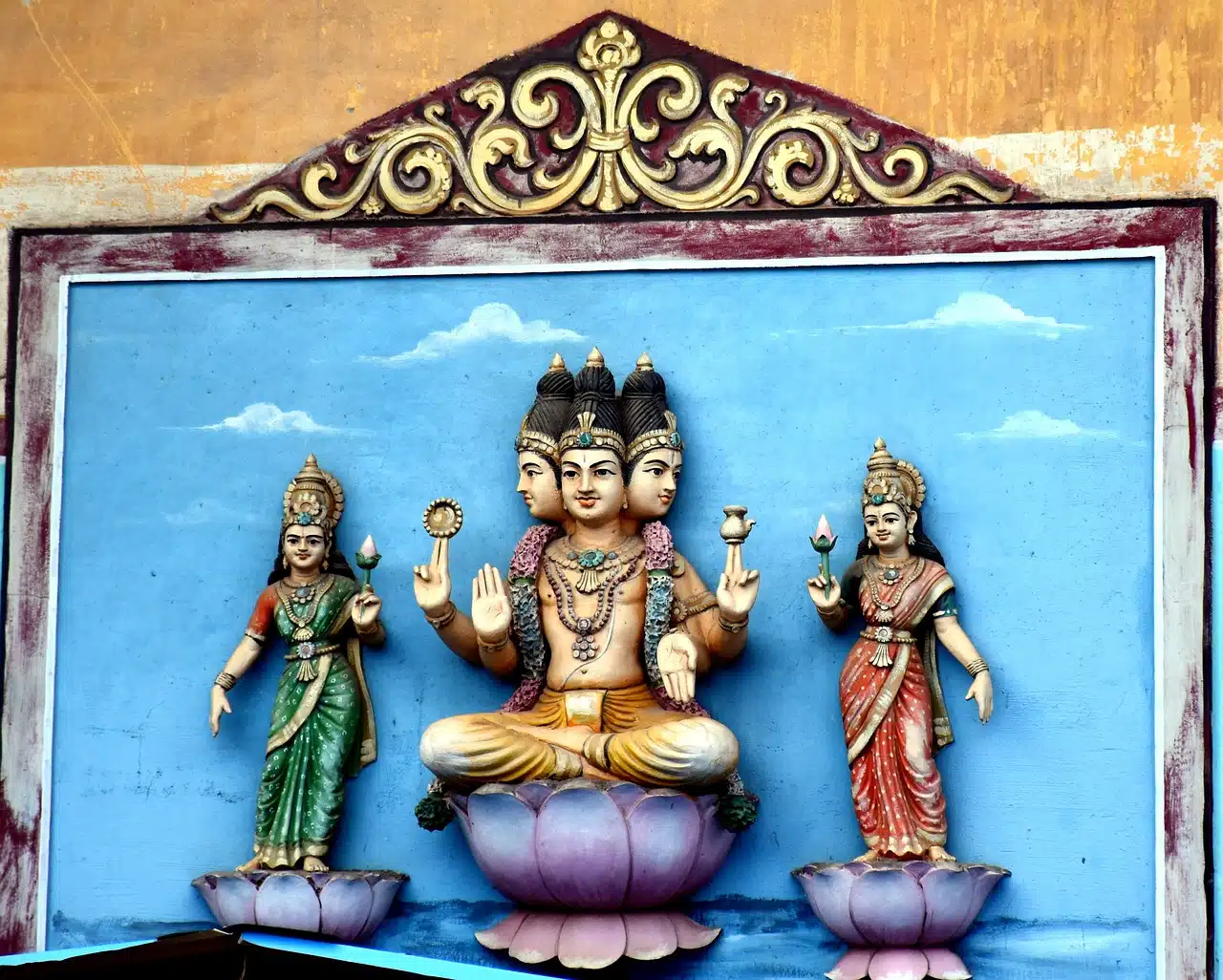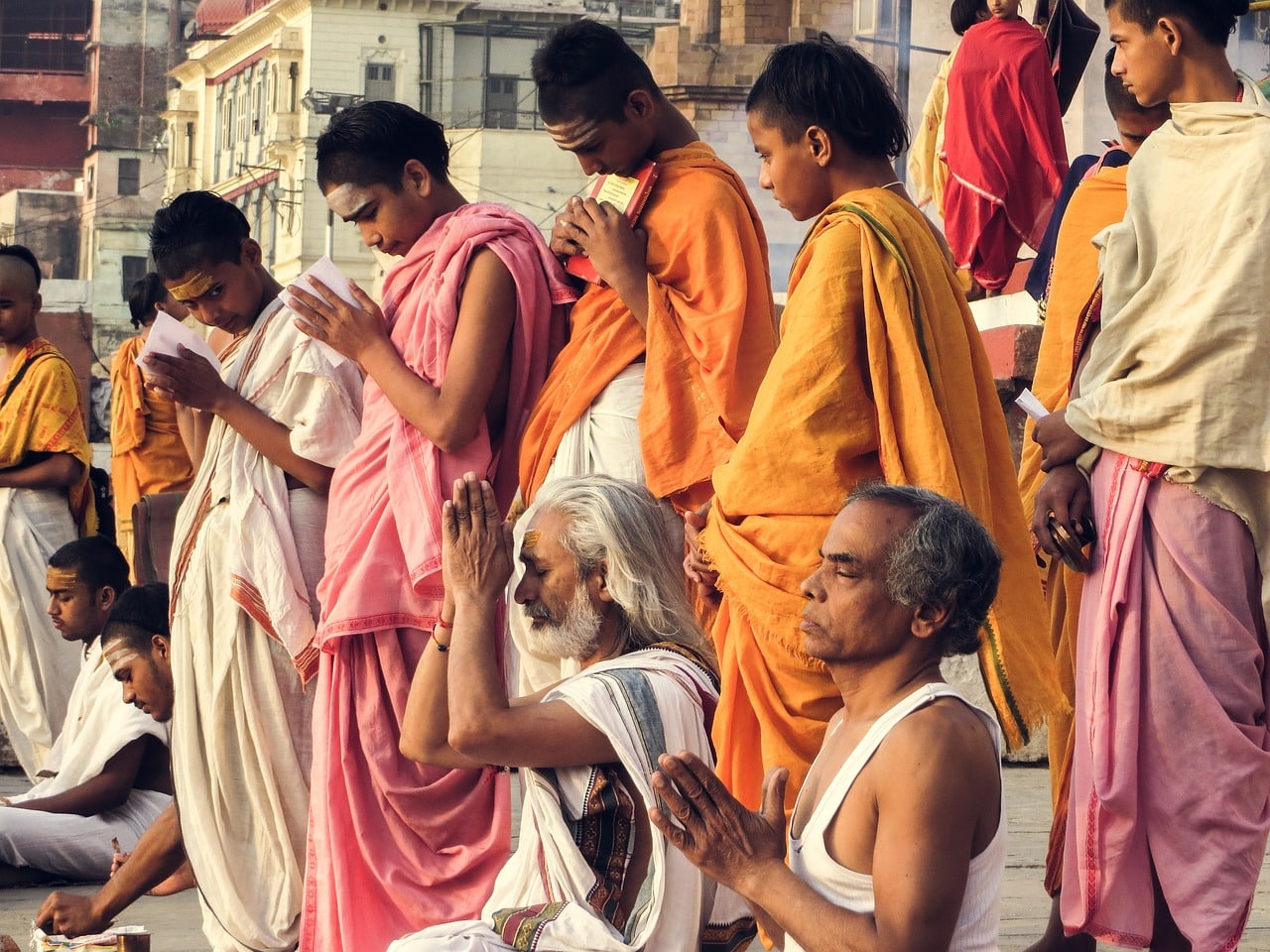
Brahma is the supreme god of Brahmanism.
Brahmanism is a religion that has Brahma as the supreme god . Originating in India , Brahmanism is considered a transition between Vedism and Hinduism .
Brahma
Brahma is the creative deity of the universe . He is one of the three supreme deities in the Hindu trimurti , along with Vishnu and Shiva, representing the functions of creation, preservation and destruction, respectively. It is an agent or the personification of Brahman , the Universal Principle .
Brahma is usually depicted with four heads , each facing in a cardinal direction, symbolizing his omnipresence and universal knowledge. Its design also has four arms , which symbolize the four Vedas, the sacred texts of Hinduism. In addition, he is usually shown sitting on a lotus, which symbolizes purity and renunciation of the material world.
In Hindu cosmology , Brahma is said to create the universe and all living beings. He is charged with the responsibility of shaping reality and establishing the laws of dharma, the cosmic and moral order. However, despite his role as creator, Brahma is not widely worshiped nor are many temples dedicated to him. This is partly due to a story in which Brahma faces a curse that prevents him from receiving direct worship from humans.
Origin of Brahmanism
It is estimated that Brahmanism emerged about 3,000 years ago as an offshoot of the Vedic religion . In its beginnings it did not have temples and its followers believed in numerous deities to whom they dedicated offerings and sacrifices.
The gods, in this framework, personified forces of nature . Primitive Brahmanism paid tribute to them with simple practices that took place on mounds or mountains, without great rituals.
From marked polytheism we moved to a position closer to monotheism , with Brahma as the main god and creator of everything. In addition, temples adorned with animal figures began to be built. Unconditional love for all living beings, in fact, is the pillar of Brahmanism. Other of its most respected values are modesty and humility.
Fundamental elements
Below we list some of the fundamental elements of Brahmanism:
- Brahman – In Brahmanism, there is considered to be a supreme, impersonal reality called Brahman. Brahman is understood as the ultimate and transcendent essence underlying the entire universe. It is the divine principle that pervades everything and is beyond the limitations of form and time;
- Atman – The concept of Atman refers to the individual self or soul. In Brahmanism, the Atman is taught to be divine in nature and essentially identical with Brahman. The realization of this identity between the individual Atman and the supreme Brahman is considered an important spiritual goal;
- Dharma – Dharma is a central concept in Brahmanism. It refers to the universal, moral and ethical laws that govern the cosmos and human life. Living according to the dharma involves following the duties and responsibilities appropriate to each individual according to his or her caste, age, and station in life;
- Karma : Karma is the law of action and consequence in Brahmanism. It is believed that every action has an impact, and those taken in previous lives can affect circumstances and experiences in the current and future life. This law emphasizes individual responsibility and the notion that correct actions lead to positive results and incorrect actions lead to negative results;
- Moksha : Moksha is liberation from the cycle of birth and death , considered the supreme goal in Brahmanism. Moksha is sought to be achieved through the realization of the true self (Atman) and unity with Brahman. Liberation from the cycle of rebirth is considered to allow union with the divine and the realization of the state of eternal bliss.

Brahmanism also refers to the Brahmin caste.
Brahmin caste
It is important to mention that the concept of Brahmanism was coined to refer to the castes of Brahmins ; that is, the priestly caste . For the Brahmins, Brahmanism was the eternal religion, whose message was modified over time based on the contributions of different scholars.
The Brahmins believed that the world is in constant renewal . Brahmanism, therefore, was also updated until it reached its modern phase: Hinduism .
